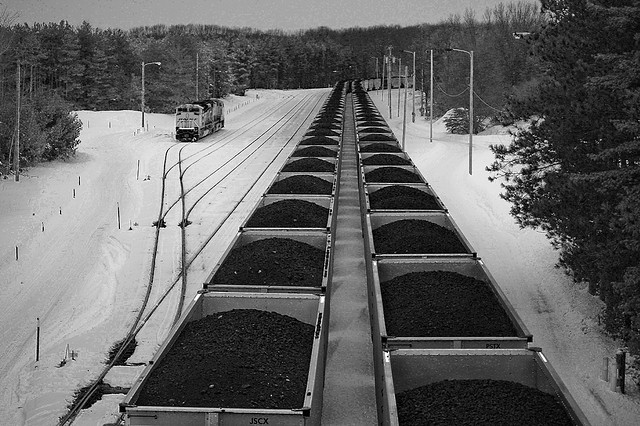Podcast: Play in new window | Download
Subscribe: RSS

A coal train once supplied the city of Holland, Michigan with fuel for its electric generating plant. They converted the plant to natural gas. Their costs are down, their emissions are down, and coal is down for the count. (Photo by wsilver/Flickr)
After bestriding the mountains of Appalachia, among many other places, like the proverbial Colossus for a century and more, the U.S. coal industry has been taken to hospice, a pathetic wasted shadow of its former self, its physical condition terminal, its thought processes derailed by dementia. It’s not a pretty sight (except perhaps to the survivors of the ruin, destruction and death it has brought to thousands upon thousands of helpless people) and there are those who say its fate foreshadows that of the oil fracking industry, which is now in the ICU, and the legacy oil bidness, which has started to have dizzy spells and occasional sudden hemorrhaging. Continue reading
